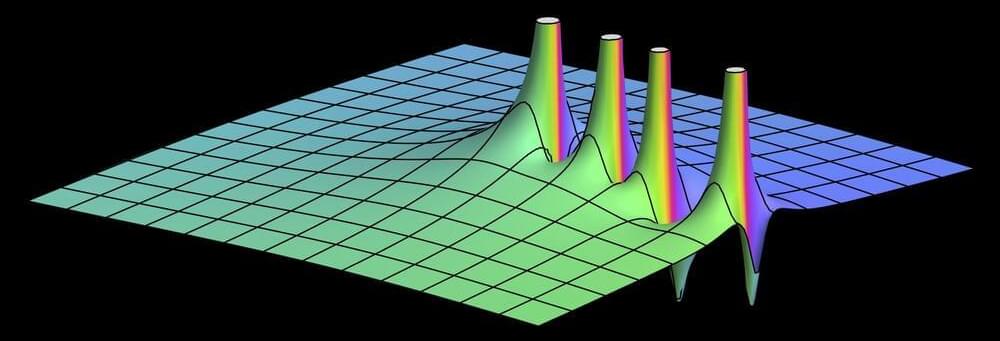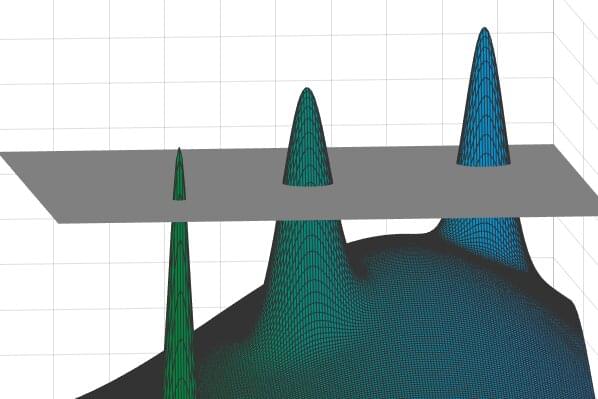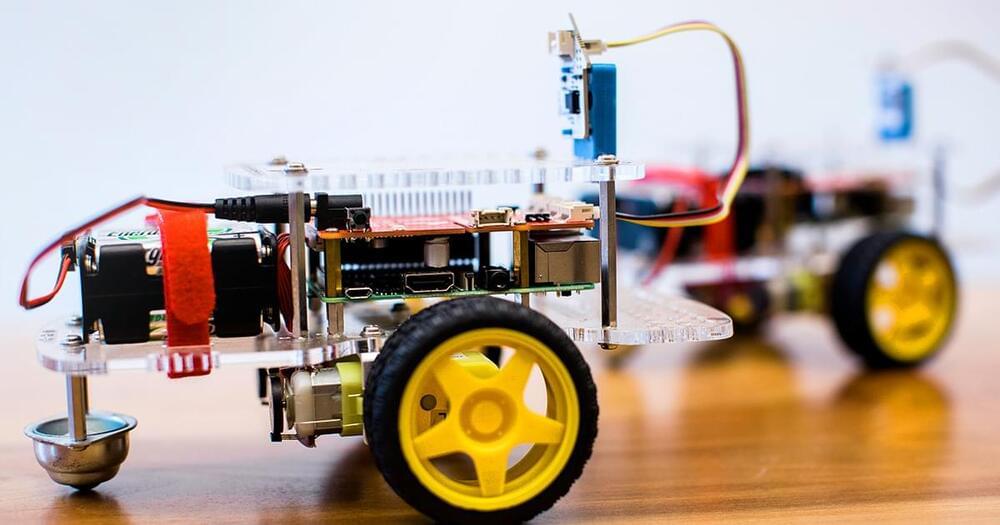Musk is sounding a familiar alarm. But the math might not add up.
SpaceX CEO Elon Musk is sounding the alarm, as data sparks concern over global population figures.


Numbers like π, e and φ often turn up in unexpected places in science and mathematics. Pascal’s triangle and the Fibonacci sequence also seem inexplicably widespread in nature. Then there’s the Riemann zeta function, a deceptively straightforward function that has perplexed mathematicians since the 19th century. The most famous quandary, the Riemann hypothesis, is perhaps the greatest unsolved question in mathematics, with the Clay Mathematics Institute offering a $1 million prize for a correct proof.

Numbers like π, e and φ often turn up in unexpected places in science and mathematics. Pascal’s triangle and the Fibonacci sequence also seem inexplicably widespread in nature. Then there’s the Riemann zeta function, a deceptively straightforward function that has perplexed mathematicians since the 19th century. The most famous quandary, the Riemann hypothesis, is perhaps the greatest unsolved question in mathematics, with the Clay Mathematics Institute offering a $1 million prize for a correct proof.
UC Santa Barbara physicist Grant Remmen believes he has a new approach for exploring the quirks of the zeta function. He has found an analog that translates many of the function’s important properties into quantum field theory. This means that researchers can now leverage the tools from this field of physics to investigate the enigmatic and oddly ubiquitous zeta function. His work could even lead to a proof of the Riemann hypothesis. Remmen lays out his approach in the journalPhysical Review Letters.
“The Riemann zeta function is this famous and mysterious mathematical function that comes up in number theory all over the place,” said Remmen, a postdoctoral scholar at UCSB’s Kavli Institute for Theoretical Physics. “It’s been studied for over 150 years.”

Tech companies continued to draw criticism for their roles in political and social scandals, most notably when whisteblower and former Facebook employee Frances Haugen testified to lawmakers. Undeterred, Facebook rebranded itself Meta and said it would now focus on building the metaverse. Twitter CEO Jack Dorsey stepped down and likewise changed the name of his company Square to Block in a not-so-subtle nod to the blockchain.
Meanwhile, volatile cryptocurrencies set new records, their prices jumping and crashing on a tweet. NFTs, a once-obscure type of cryptoasset, went on an eye-watering tear as redditors pushed meme stocks skyward. It was also the year of ever-bigger AI. Machine learning models surpassed a trillion parameters, designed computer chips, and tackled practical problems in biology, math, and chemistry. Elsewhere, billionaires went to space, regular folks bought 3D printed houses, fusion power attracted billions in investment, gene editing trials hit their stride, and “flying car” companies hit the New York Stock Exchange.
For this year’s list of fascinating stories in tech and science, we sifted our Saturday posts and selected articles that looked back to where it all began, glanced ahead to what’s coming, or otherwise stood out from the chatter to stand the test of time.

Universal law always works perfectly well.
Wherever there is sand and an atmosphere, prevailing winds may whip the grains into undulating shapes, pleasing to the eye with their calming repetition.
Certain sand waves, with wavelengths between 30 centimeters (almost 12 inches) and several meters (around 30 feet), are known as megaripples: they’re between ordinary beach ripples and full dunes in size, and we’ve seen them not just on Earth, but even on other planets such as Mars, well known for its all-encompassing dust storms.
Aside from their size, a key characteristic of these middle-ground ripples is the grain size involved – a surface of coarse grains over an interior of much finer material. Yet this mix of grains is never the same, and nor are the winds that blow across the sand to create the ripples in the first place.
Paul Nelson has solved the subconvexity problem, bringing mathematicians one step closer to understanding the Riemann hypothesis and the distribution of prime numbers.

The notion that some computational problems in math and computer science can be hard should come as no surprise. There is, in fact, an entire class of problems deemed impossible to solve algorithmically. Just below this class lie slightly “easier” problems that are less well-understood—and may be impossible, too.
David Gamarnik, professor of operations research at the MIT Sloan School of Management and the Institute for Data, Systems, and Society, is focusing his attention on the latter, less-studied category of problems, which are more relevant to the everyday world because they involve randomness —an integral feature of natural systems. He and his colleagues have developed a potent tool for analyzing these problems called the overlap gap property (or OGP). Gamarnik described the new methodology in a recent paper in the Proceedings of the National Academy of Sciences.

From the cosmic microwave background to Feynman diagrams — what are the underlying rules that work to create patterns of action, force and consequence that make up our universe?
Brian’s new book “Ten Patterns That Explain the Universe” is available now: https://geni.us/clegg.
Watch the Q&A: https://youtu.be/RZB95znAGRE
Brian Clegg will explore the phenomena that make up the very fabric of our world by examining ten essential sequenced systems. From diagrams that show the deep relationships between space and time to the quantum behaviours that rule the way that matter and light interact, Brian will show how these patterns provide a unique view of the physical world and its fundamental workings.
Brian Clegg was born in Rochdale, Lancashire, UK, and attended the Manchester Grammar School, then read Natural Sciences (specialising in experimental physics) at Cambridge University. After graduating, he spent a year at Lancaster University where he gained a second MA in Operational Research, a discipline developed during the Second World War to apply mathematics and probability to warfare and since widely applied to business problem solving. Brian now concentrates on writing popular science books, with topics ranging from infinity to ‘how to build a time machine.’ He has also written regular columns, features and reviews for numerous magazines and newspapers, including Nature, BBC Focus, BBC History, Good Housekeeping, The Times, The Observer, Playboy, The Wall Street Journal and Physics World.
This talk was recorded on 28 September 2021.
–
A very special thank you to our Patreon supporters who help make these videos happen, especially:
Supalak Foong, efkinel lo, Abdelkhalek Ayad, Martin Paull, Ben Wynne-Simmons, Ivo Danihelka, Hamza, Paulina Barren, Kevin Winoto, Jonathan Killin, János Fekete, Mehdi Razavi, Mark Barden, Taylor Hornby, Rasiel Suarez, Stephan Giersche, William ‘Billy’ Robillard, Scott Edwardsen, Jeffrey Schweitzer, Gou Ranon, Christina Baum, Frances Dunne, jonas.app, Tim Karr, Adam Leos, Michelle J. Zamarron, Fairleigh McGill, Alan Latteri, David Crowner, Matt Townsend, Anonymous, Robert Reinecke, Paul Brown, Lasse T. Stendan, David Schick, Joe Godenzi, Dave Ostler, Osian Gwyn Williams, David Lindo, Roger Baker, Greg Nagel, and Rebecca Pan.
–
Subscribe for regular science videos: http://bit.ly/RiSubscRibe.

Many of these systems are kept out of equilibrium because individual constituents have their own power source — ATP for cells, gas for cars. But all these extra energy sources and mismatched reactions make for a complex dynamical system beyond the reach of statistical mechanics. How can we analyze phases in such ever-changing systems?
Vitelli and his colleagues see an answer in mathematical objects called exceptional points. Generally, an exceptional point in a system is a singularity, a spot where two or more characteristic properties become indistinguishable and mathematically collapse into one. At an exceptional point, the mathematical behavior of a system differs dramatically from its behavior at nearby points, and exceptional points often describe curious phenomena in systems — like lasers — in which energy is gained and lost continuously.
Now the team has found that these exceptional points also control phase transitions in nonreciprocal systems. Exceptional points aren’t new; physicists and mathematicians have studied them for decades in a variety of settings. But they’ve never been associated so generally with this type of phase transition. “That’s what no one has thought about before, using these in the context of nonequilibrium systems,” said the physicist Cynthia Reichhardt of Los Alamos National Laboratory in New Mexico. “So you can bring all the machinery that we already have about exceptional points to study these systems.”